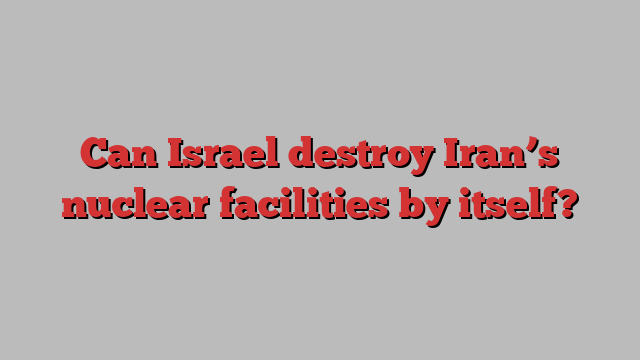
Unlock the Editor’s Digest for free
Roula Khalaf, Editor of the FT, selects her favourite stories in this weekly newsletter.
Asked if he would support an Israeli strike on Iran’s nuclear facilities, US President Joe Biden on Wednesday was unequivocal: “The answer is no.”
Some hawks in Israel have nevertheless been debating whether its air force should carry out such a strike in retaliation for the barrage of 180 ballistic missiles that Tehran fired into Israel this week.
But without US support, a solo Israeli air strike on Iran’s nuclear facilities would be highly risky and at best only delay rather than destroy its programme, according to analysts.
Why would an Israeli operation be difficult?
The first reason is distance. It is more than a thousand miles from Israel to Iran’s main nuclear bases, and to reach them Israeli planes would have to cross the sovereign airspace of Saudi Arabia, Jordan, Iraq, Syria and potentially Turkey.
The next is fuel. Flying to the targets and back would take all of Israel’s aerial refuelling capability and leave little or no margin for error, according to a report by the US Congressional Research Service.
The third is Iranian air defence. The country’s main nuclear sites are heavily guarded, and the Israeli bombers would need to be protected by fighter jets.
That would require a strike package totalling about 100 aircraft, according to the CRS report — equivalent to almost a third of the Israeli air force’s 340 combat-capable aircraft.
How well protected are Iran’s nuclear facilities?
Destroying Iran’s two main nuclear enrichment facilities would be Israel’s biggest challenge.
The vast fuel-enrichment plant at Natanz is deep underground, while the second-biggest plant at Fordow is dug into a mountain. Destroying them would require weapons that can penetrate several dozen meters of rock and reinforced concrete before exploding.
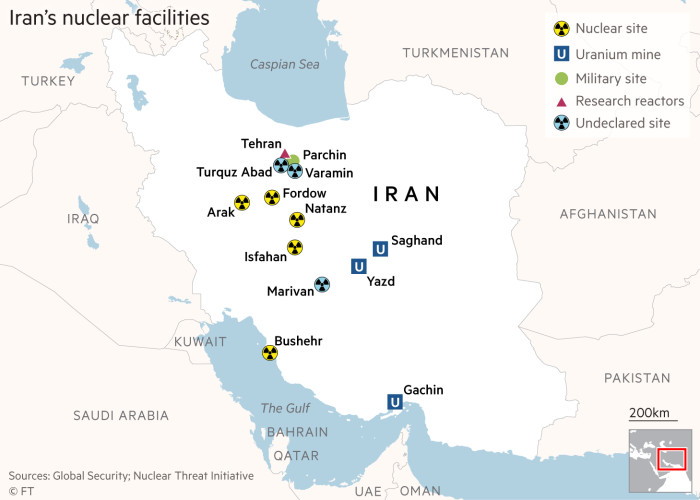
Israel does have bunker-buster bombs, such as the 2,000lb GBU-31 bombs the Israeli air force dropped last week on four buildings in Beirut to kill Hizbollah chief Hassan Nasrallah.
Yet Israeli reports suggested 80 bombs were used in that hit — and it is unlikely that a similarly sized barrage would destroy the more heavily protected Iranian nuclear facilities.
Analysts said there is only one conventional weapon that could plausibly do the job: the GBU-57A/B Massive Ordnance Penetrator (MOP). This giant, precision-guided bomb is about 6 metres long, weighs 30,000lb, and can plough through 60 metres of earth before detonating, according to the US military.
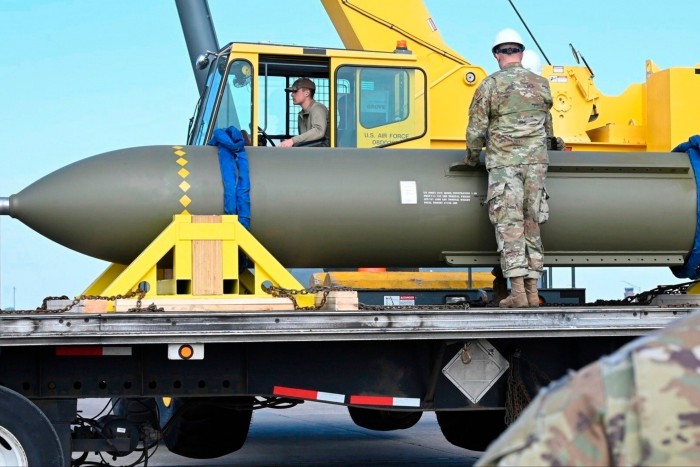
Has Israel developed its own bunker-buster bombs?
It is unclear whether Israel has such capabilities. Some former US policymakers have frequently suggested Washington should supply them.
Yet Ehud Eilam, a former researcher at Israel’s Ministry of Defence, said even if Israel could obtain the MOP, “its F-15, F-16 and F-35 fighter bombers could not carry it”.
Furthermore, there is “no chance” Israel would be able to purchase a strategic US bomber, such as the B-2 Spirit, that is needed to drop such a bomb, Eilam said.
In theory, Israel could instead use one of its several C-130J Hercules transport planes to drop a MOP bomb from its cargo doors, a clunky procedure known as a “ramp drop”. But the MOP is not designed for this type of delivery.
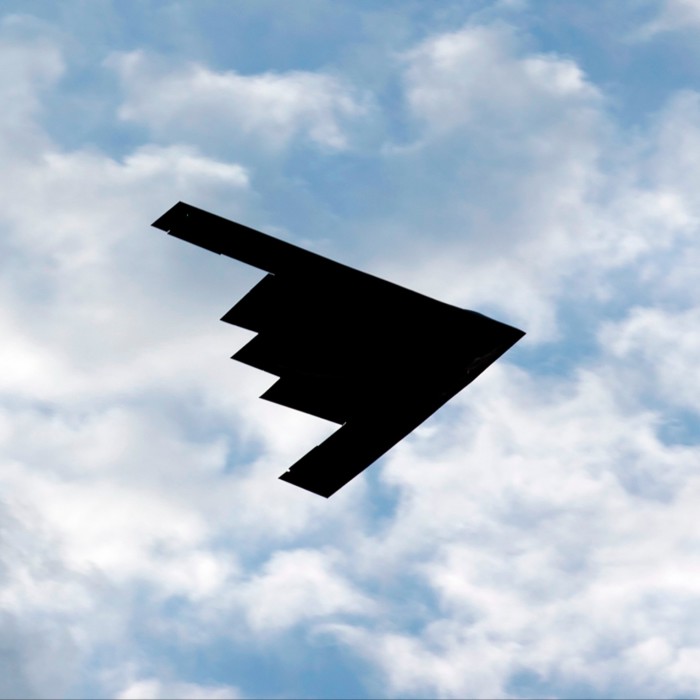
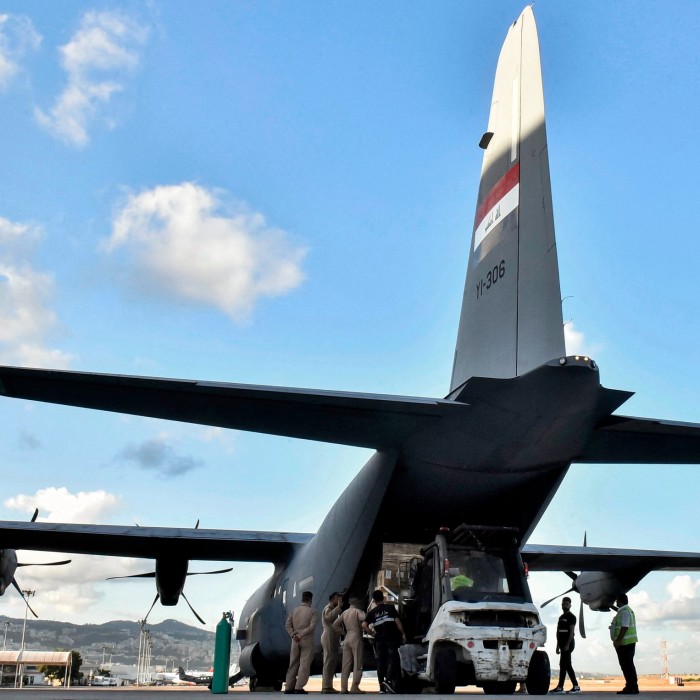
Are there alternatives for Israel?
Israeli jets could disable the nuclear sites by bombing their air intakes and other supporting infrastructure. That might disrupt the high degree of precision the centrifuges that are used to enrich uranium need to function properly, although it would not destroy them.
Sabotage is the final possibility. In 2021, a power failure, apparently caused by a planned explosion, struck Natanz’s internal power system that supplied the underground centrifuges. In 2010, the US and Israel allegedly also halted Iran’s nuclear programme with the Stuxnet computer virus. But such attacks did not succeed in stopping its work indefinitely.
Ultimately, the scale of force required to seriously damage Iran’s main facilities “would require extensive US support, if not direct involvement”, wrote Darya Dolzikova and Matthew Savill of the Royal United Services Institute think-tank in a recent paper. Even that would also “not guarantee total destruction”.